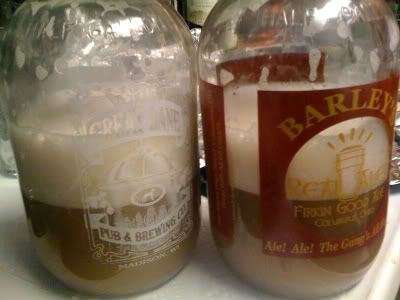Yea, I thought about that Sudbuster. Tough to argue with a real scientist. I went back and looked over JZ's
Fourteen essential questions... article and in the section on stirplated starters he says:
But when you use the calculator it doesn't agree (below I just changed the starter type and OG until the starter size was about the same, ~3.9L in this case. Then looked at the cell count).
Per the calculator:
1 yeast pack plus 3.97L of simple starter yields 275B cells
1 yeast pack plus 3.9L of shaken starter yields 347B cells
1 yeast pack plus 3.88L of stirplated starter yields 417B cells
Here the stirplated starter isn't even double the simple starter.
In any case, I've been sort of blindly trusting that calculator and you've given me reason to question it. So thanks for that.








